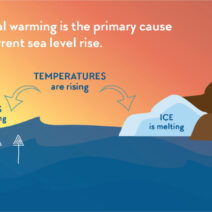Have you ever gazed up at the sky and wondered what those white streaks are that crisscross like a web of silk? While they may seem innocuous, these formations, known as contrails, have substantial implications for our planet’s climate. In this article, we will delve into how contrails from airplanes contribute to global warming, unveiling their elusive nature and the urgency of addressing their impact.
To begin, contrails, or condensation trails, are ice crystals that form when water vapor emitted by aircraft engines mixes with the cold, humid air at high altitudes. These trails can linger for hours, especially under specific atmospheric conditions. The ice crystals in contrails are significant because they have the potential to trap heat radiating from the Earth’s surface, creating a blanket effect similar to greenhouse gases. This phenomenon is what makes contrails a concern in the context of climate change.
But how do contrails specifically contribute to global warming? The fundamental role:
1. **Heat Retention:** As mentioned earlier, contrails reflect incoming sunlight and trap outgoing infrared radiation. This dual action results in an increase in atmospheric temperature. The net effect can lead to a rise in global temperatures, exacerbating the already critical state of climate change.
2. **Persistent Contrails:** Not all contrails have the same impact. Lucid and persistent contrails, those that last for hours or even spread out into cirrus-like clouds, are particularly troublesome. Studies suggest that these persistent contrails can have a climate warming effect that is two to four times greater than that of carbon dioxide emissions from the same flights. If we take into consideration the growth of air travel, empirical assessments indicate that the warming effect of contrails could outweigh their cooling potential, resulting in a net increase in global temperatures.
3. **Regional Effects:** Different regions experience varied consequences from contrails. While areas with high air traffic, such as North America and parts of Europe, may suffer significantly from their warming effects, less trafficked regions may see a diminished impact. This uneven distribution can complicate climate policies aimed at curbing emissions.
One might ponder the frequency of these contrail-induced warming effects. Research indicates that aircraft emissions contribute to around 4% of the human-induced warming, with contrails representing a sizeable portion of that percentage. With air travel continually on the rise, the need for immediate action becomes increasingly urgent. Considering that air traffic is projected to double by 2037, the implications for future global warming are daunting.
Despite these intimidating statistics, we must consider whether technological advancements can mitigate the adverse effects of contrails. Innovative strategies are being developed to combat this problem:
1. **Aircraft Design:** The aviation industry is actively exploring ways to create more efficient aircraft, reducing not only fuel consumption but also emissions. For example, advanced engine designs could lead to lower water vapor outputs, indirectly minimizing contrail formation.
2. **Altitude Control:** Researchers are examining the potential of adjusting flight altitudes to avoid the atmospheric conditions that favor contrail formation. By routing planes through regions less conducive to producing contrails, airlines can effectively reduce their warming impact.
3. **Operational Measures:** Incorporating optimized flight paths and speeds could lead to lower emissions and, consequently, fewer contrails. Implementing these adjustments may require systemic changes across the industry, but the potential for climate benefit is significant.
Now, let’s pose a playful challenge: What if we could turn the problem of contrails into a sustainable solution? Imagine if innovations emerged that could not only mitigate contrail formation but also utilize it for positive environmental impact. For instance, if researchers could engineer substances that enhance the cooling effect of contrails or develop bioengineering methods to create clouds capable of reflecting sunlight, we might tilt the balance back in favor of the climate.
However, striking the right balance in addressing the contrail dilemma requires global cooperation and commitment. Regulatory frameworks should incentivize research in contrail reduction technology and impose stricter emissions criteria. Furthermore, public awareness and advocacy for greener flight options are essential. Every individual can play a part by choosing airlines with sustainable practices or supporting policies that prioritize environmental stewardship.
The interplay between aviation and climate change illustrates the complexity of our modern world. Contrails serve as a poignant reminder of the unintended consequences of our technological advances. As we continue to soar into the skies for exploration and connection, we must keep our feet firmly planted on the ground, advocating for a future where contrails don’t contribute to the climate crisis. Through innovative thinking, collaborative effort, and steadfast commitment to sustainability, we can indeed make a difference in our warming world.
In summary, contrails from planes may appear as harmless streaks of cloud, but their impact on global warming is undeniable. As we continue to understand the intricate relationship between aviation and climate change, it becomes imperative that we work collectively towards solutions that mitigate their negative effects. The sky may be the limit for our aspirations, but it should also be a space where we balance our activities with the health of our planet. Let’s engage in this global challenge and work towards ensuring a sustainable future.




